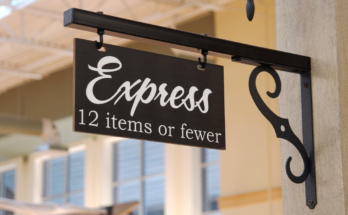
Grant writing is a distinct form of the craft—much different from crafting a persuasive essay or an informational blog post. The content in a grant proposal must be catered to the funder it targets, describe in concise detail the work the money will fund, and stand out among hundreds, if not thousands, of other applications.
Grant writing is also a skill, and you’ll get better at it the more you do it. Over the past five years, I have written my own grants and reviewed others’ grant proposals for submission approval. Along the way, I’ve picked up a few tips to help beginners get off to a good start.
Find the right fit for your work
In my earlier work with fiscal sponsor Fractured Atlas, I found many grant applicants assumed there exists out there a list of potential funders perfect for their proposed project, and all they need is access to it. Unfortunately, such compiled lists don’t typically exist, and searching for funding sources is an arduous process. Before you start, make sure you are up for the task.
Most individuals can use the foundation resources offered by Candid (formerly known as the Foundation Center), an online directory of funders ranging from small family foundations to large government institutions. If you have the money to spare, you can purchase the “Essential” Membership to the service for $49.99 a month, or $758 for two years. Otherwise—once the pandemic is over—you can go into any of Candid’s official in-person locations to browse their database for free. Look for opportunities that are the closest match to your own work. Every funder is looking to support something different: For example, the Harkness Foundation only supports the arts— specifically, dance projects. Others focus on humanities, like the National Endowment for Humanities, while still others, like the Ford Foundation, tend to spread their focus more broadly. Fractured Atlas advises:
Look at their websites, their mission statement, and their past 990s. See who they’ve funded in the past. By researching funders, you’ll be able to get a real sense of whether your project is actually the kind of thing that they are likely to support.
Some opportunities may not be a 100% match with your work while still aligning with the basics of what you are trying to achieve. It’s most important to remember that you shouldn’t attempt to alter your work to fit any one funder’s mold. That will never work out—not for your project, and not for the funders, who can always tell when your project is truly not meant for their organization. A right fit means your mission and vision match theirs, and that you meet the opportunity’s eligibility criteria. For example, I once wrote a grant for the New York Foundation of the Arts for a web series that featured women in front and behind the camera, targeting a specific opportunity aimed at women in media. This application was successful because the organization’s mission matched mine and my work spoke directly to what the funder was trying to support.
G/O Media may get a commission
Keep the content clear and concise
Even after you’ve found the right opportunity, it can still be nerve-wracking to write about your own work. First and foremost, tell the funder exactly what you do, forgoing flowery language or jargon. If you run a youth choir, state that specifically in your proposal. You don’t want to immediately launch into rhetoric about “the important implications of singing in this modern age” before saying you run a choir; this will only confuse the readers and obscure your message. Try to explain things in layman’s terms—the grant reviewers may work in your field, but only you have your unique experience. “Explain why there is a problem you need to solve and provide evidence that supports your claim, and then connect it back to your project, and then back to the funder’s priorities,” advises Vanessa Ramalho, former Development Director for the Philadelphia Asian Arts Initiative. “You need to connect the dots for the reviewer in order to make a case for why they should fund you.”
I like to think about it in terms of instructing someone who has never made a sandwich how to turn peanut butter, jelly, and bread into a lunch. You can’t assume anything: You have to tell them where to get the jar of jelly and the peanut butter, and what utensils are used, and how you assemble them into a sandwich. If their experience lies elsewhere, you otherwise might wind up with a very odd-looking sandwich.
Ask for an accurate amount of funds
There is a delicate balance between asking for what you really need and understanding what the funder is willing to give. Generally, a funder is only willing to support about 30% of your full project budget. Funders usually do not want to be the sole funder of a project and would rather know your work is supported by other sources. For example, the New York Council for the Arts (NYSCA) states in their guidelines for individual artists in the film category that applicants should, “note that NYSCA will not cover more than 50% of the total project cost.”
Knowing this helps you formulate an accurate budget and target a reasonable ask amount that serves your needs and meets the funder’s guidelines. This is where scouring the funders’ past 990s—the tax forms that non-profits must file with the IRS—for past donation information comes in handy. You can see how much a funder generally gives and can base your numbers off of their past behaviors. Asking for too much is an issue, but asking for too little can raise red flags as well. If you approach a funder that usually gives larger amounts (say, $50,000) but your ask is much smaller ($10,000), they will view your project scale as too small for their funding.
The important thing is to be as honest as possible. Create a budget for what you actually need and estimate how much you can raise from all the funders you’re applying to. Based on their funding habits and your needs, you should be able to zero in on the perfect ask amount.
Reread and rewrite, focusing on the details
After you have completed the proposal, reread it out loud to yourself and make necessary corrections where the language sounds clunky or unclear. Have another person read it over as well, as this will help you get an outside perspective on your writing, and catch any gaps in your supporting information as well as any typos or grammatical errors.
Ramalho offers some additional insight on what to consider after the first draft is complete:
- Is the writer is too close to the project and the narrative to assess it objectively?
- Is the narrative clear or confusing to read?
- Is it scannable?
- Can you find the evaluation criteria and funder priorities?
- Does it flow/ read well?
“On average, I will take a proposal through at least 4 or 5 drafts before it will be ready to submit,” Ramalho says. Take this into consideration when are planning out a timeline for your application process. The first draft is most likely not your last, so give yourself adequate time to reflect and edit. And don’t be afraid to ask for help.



